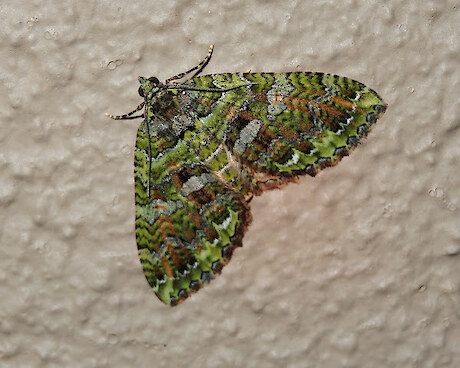 Helm’s forest ringletNot long ago our native butterflies and moths were far more abundant than they are today. The once-common kahukura (red admiral) and kahukōwhai (yellow admiral) butterflies are now seriously endangered, and the endemic te tēpepe pōuri (forest ringlet) was routinely seen in suburban gardens within living memory. Loss of habitat has hastened native butterfly decine, but the main culprit is invasive wasps.
Helm’s forest ringletNot long ago our native butterflies and moths were far more abundant than they are today. The once-common kahukura (red admiral) and kahukōwhai (yellow admiral) butterflies are now seriously endangered, and the endemic te tēpepe pōuri (forest ringlet) was routinely seen in suburban gardens within living memory. Loss of habitat has hastened native butterfly decine, but the main culprit is invasive wasps.
Ways you can help
- Butterflies live on nectar, so planting flowering plants in your garden or on your balcony is good for them.
- Caterpillars of both admiral species feed on stinging nettles, which are shunned by most gardeners. Finding a suitable safe spot to grow the European stinging nettle or maybe even the impressive native ongaonga is essential for the survival of these species. If you’re keen, we can help you source some plants.
- Locating and destroying the nests of asian paper wasps really enhances the chances of survival of admiral and monarch butterflies alike.
For more on what you can do in your patch visit our wasps page and our Back Gardens section. For everything else butterfly, consult the Moths and Butterflies of NZ Trust.
Monarchs
The much-loved kahuku / Monarch butterflies are relatively common around the world, but are regarded as a New Zealand native as they arrived here under their own power.
 Red AdmiralAdmirals
Red AdmiralAdmirals
The kahukōwhai / yellow admiral is another native, self-introduced from Australia, but the strikingly-beautiful kahukura / red admiral is totally unique to New Zealand. While they are definitely in trouble, there is hope in the form of several locals breeding native admirals in partial captivity, protected from wasp attack, and then releasing into the “wild”. Provided we can control wasps, admirals could once again become a common suburban sight. And perhaps one day we can even lure back the Forest Ringlet.
 Rauparaha’s Copper ButterflyCoppers
Rauparaha’s Copper ButterflyCoppers
Our local Copper Butterflies are unique to New Zealand and especially like Auckland’s coastal margins where their caterpillars feed on Muehlenbeckia species, at least when the wasps don’t get them first. Unfortunately coppers don’t migrate very far so re-establishing them to where they aren’t, is a slow process. Everyone should have some Muehlenbeckia.
 Green Coprosma MothMoths
Green Coprosma MothMoths
Moths are often overlooked as the dowdy relatives of our lepidoptera, but are incredibly diverse and a vital part of a healthy ecosystem. Around 80% are unique to New Zealand and many are very beautiful up close. There is growing evidence that a drastic decline is happening and that it’s probably world-wide. A nationwide survey in Germany reports an 80% decline!
 Puriri MothOur native birds and reptiles cannot survive and reproduce without a constant supply of invertebrates, and moths and their caterpillars are a major part of a healthy ecosystem. You can encourage our native moths by avoiding insecticides and instead enjoying seeing leaves munched, knowing that it’s all part of a working ecosystem. Plant a wide variety of native trees and plants to narrow the gaps where these creatures may otherwise disappear for lack of their favourite plants. Let leaves naturally build up around and under your garden and of course, deal to your wasps where and when you can. Any visiting pīwakawaka will thank you with its presence.
Puriri MothOur native birds and reptiles cannot survive and reproduce without a constant supply of invertebrates, and moths and their caterpillars are a major part of a healthy ecosystem. You can encourage our native moths by avoiding insecticides and instead enjoying seeing leaves munched, knowing that it’s all part of a working ecosystem. Plant a wide variety of native trees and plants to narrow the gaps where these creatures may otherwise disappear for lack of their favourite plants. Let leaves naturally build up around and under your garden and of course, deal to your wasps where and when you can. Any visiting pīwakawaka will thank you with its presence.
